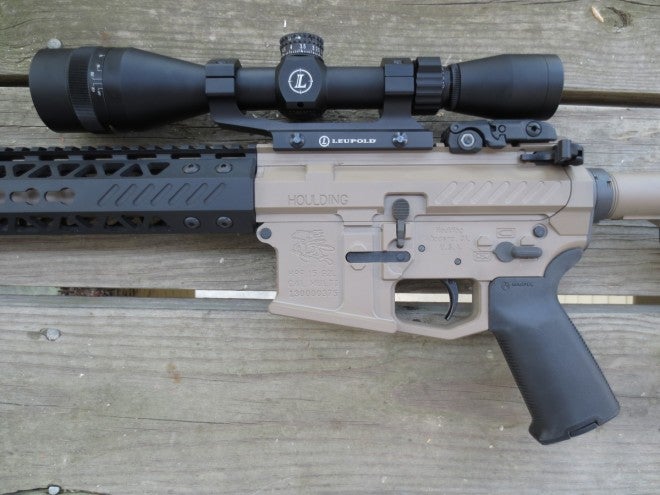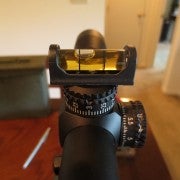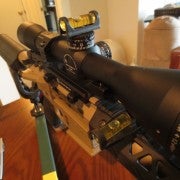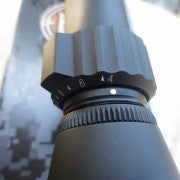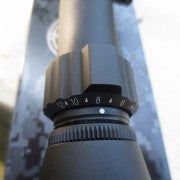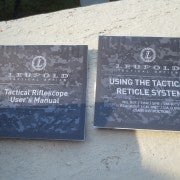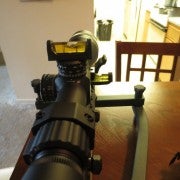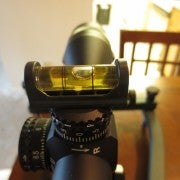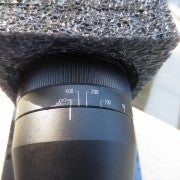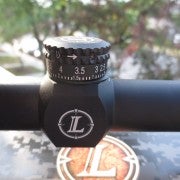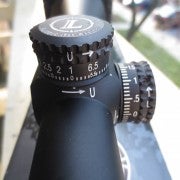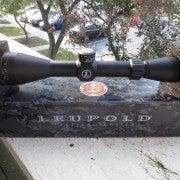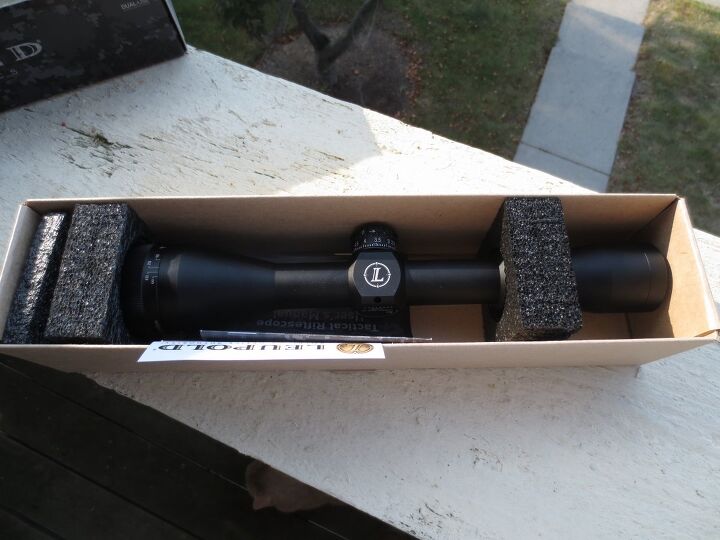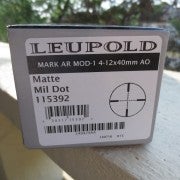What happens when optics guys put their hats on and design a scope for common sporting rifles in common shooting situations? You get a solid concept with the potential for excellent execution.
The Mark AR series is designed specifically for Modern Sporting Rifles and similar intermediate caliber rifles. The features, magnification, and adjustment are specifically chosen and implemented for ranges up to about 600 yards, coincidentally the maximum “effective” range of the 5.56/.223 round.
So, is a purpose-built (but dual-purpose) scope worth the money? Read below to find out.
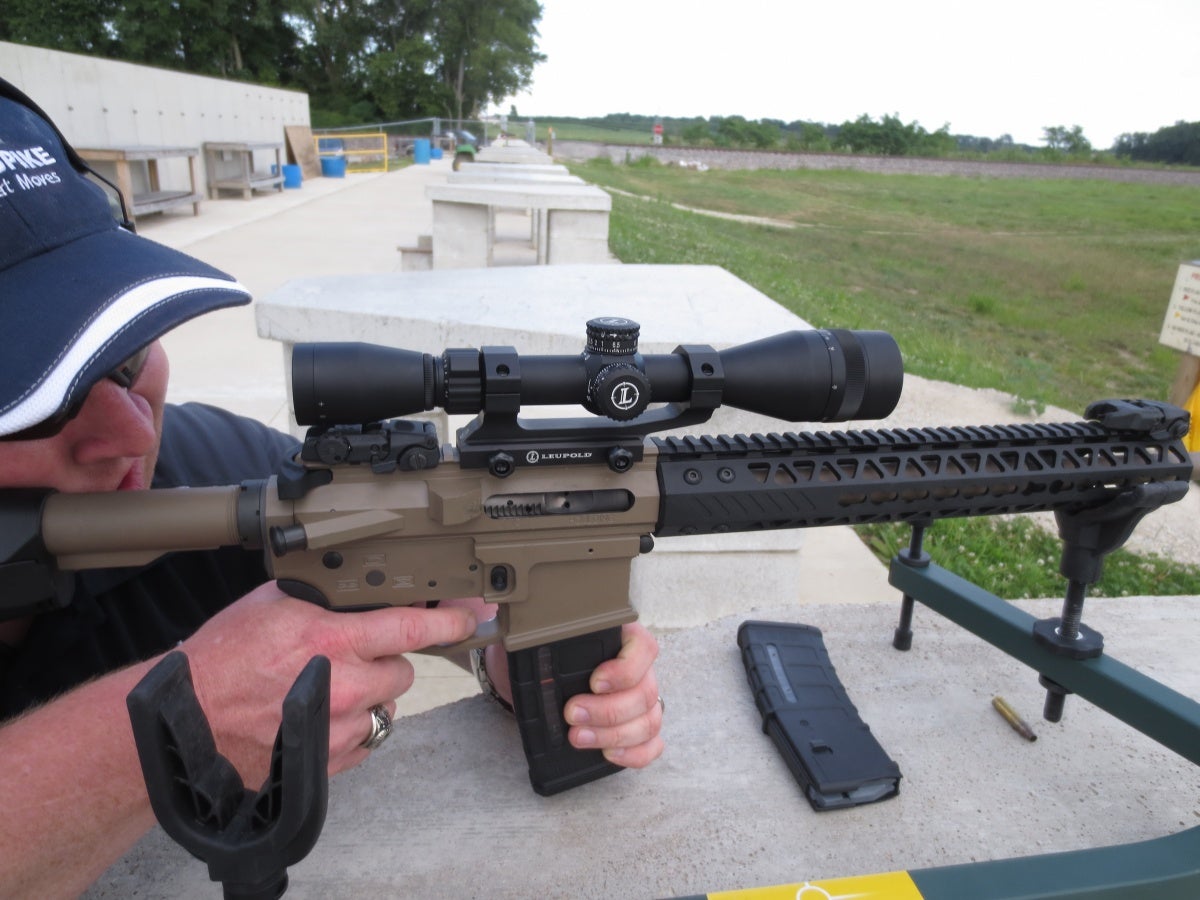
Overview:
Leupold sent their 4-12x at my request; I was testing a “match-grade” rifle, the Houlding Precision HPF-15. With my stable of lower-quality optics, I did not feel that I was able to adequately test the rifles claims. They included a one-piece aluminum mount designed specifically for their 1″ optics that cantilevered forwards so the base can sit on most receivers without having to mount to handguards.
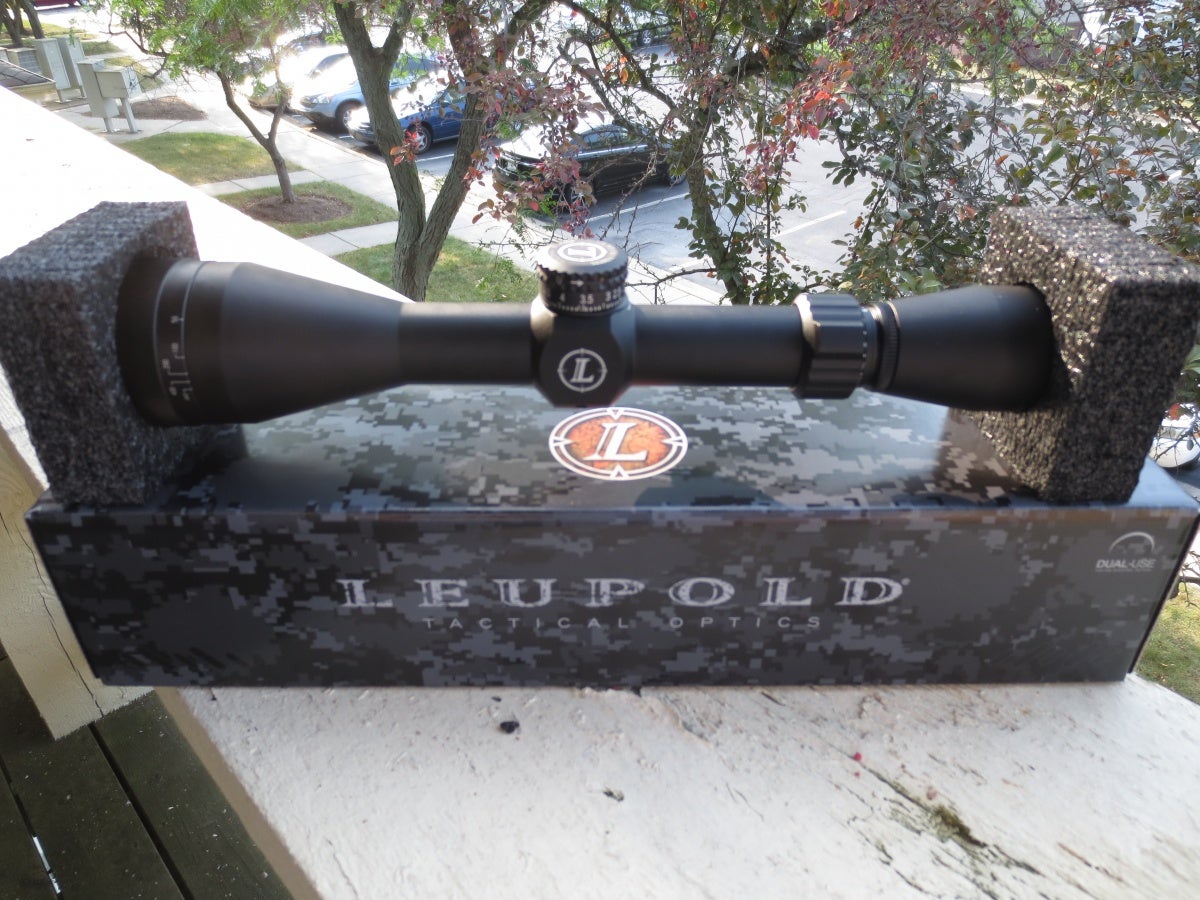
The scope itself is a 1″ tube with a 40mm objective lense. At maximum magnification, this would put the exit pupil at 3.3mm, just enough for most shooters in most scenarios (see a trend?). Parallax is adjustable on the front ring and focus on the rear ring from 25 yards to infinity. Zoom is chosen via a raised adjuster with a vertical nub in the middle of the zoom range to easy manipulation. The chosen power is demarcated with a simple white dot on the top center of the tube just in front of the focus adjustment.
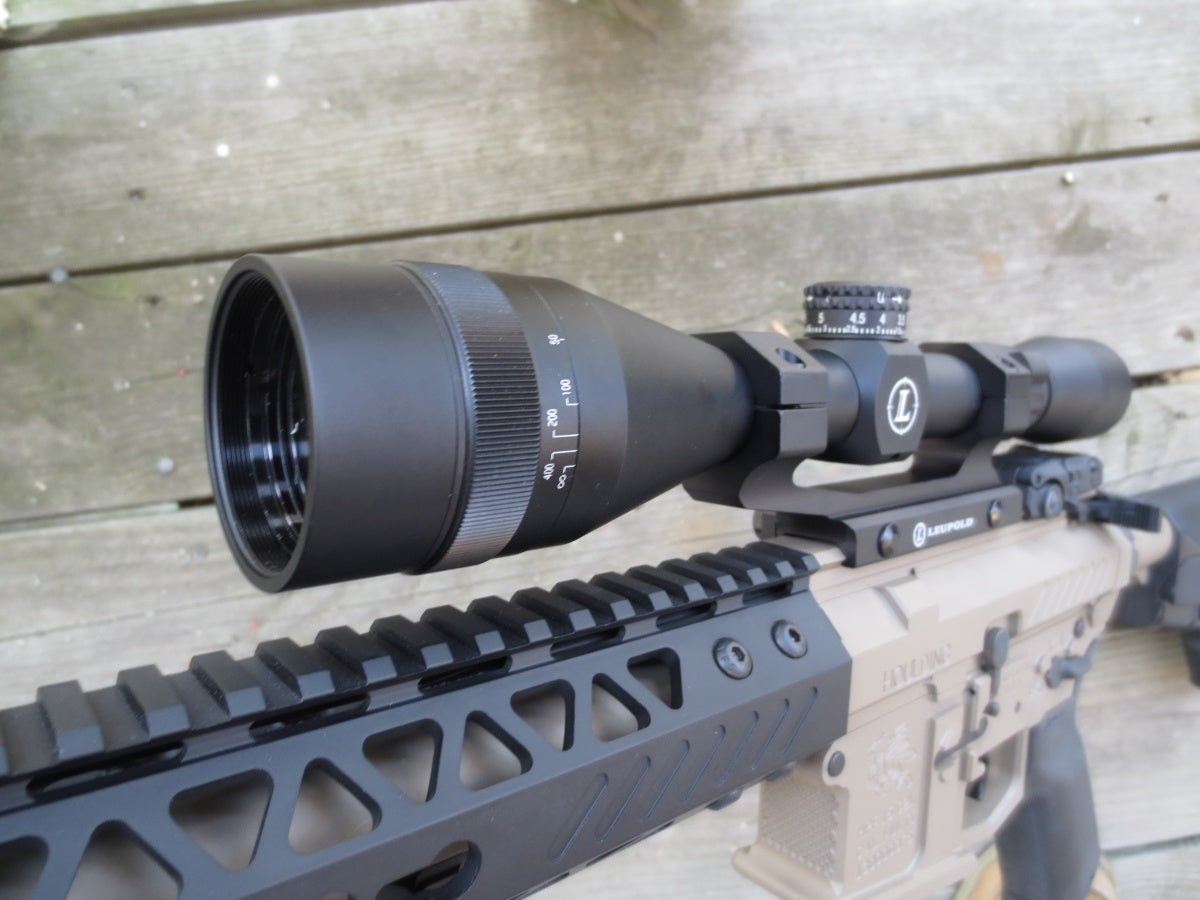
Windage and Elevation knobs adjust 1/2 MOA per click and have 55 MOA of adjustment across both vertical and horizontal planes. For zeroing, the knob covers are removed using the supplied hex key. Once zeroed, the knobs cover and protect the adjustment mechanism and server as the index points in case of adjustments. Both are marked with 1-3, with hash marks at each click. Each .5 increment is labeled with a number.
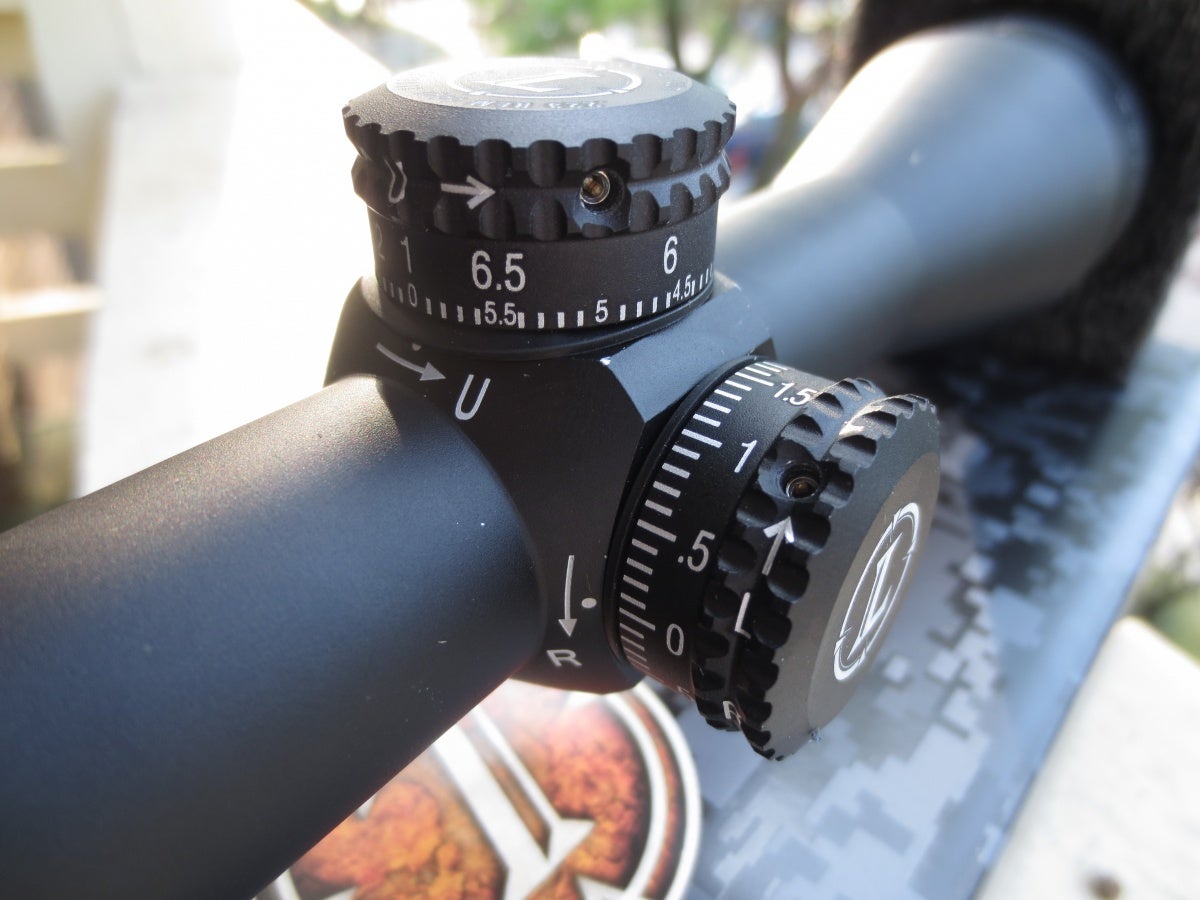
What makes the Mark AR most intriguing is the second set of numbers for the elevation knobs. The click indicators are minimized to make room for large, pronounced numbers indicating ranges. When zeroed for 100 yards (“1”) the shooter can quickly rotate the elevation knob to the appropriate range to target, center the reticle, and pull the trigger. The markings are the built-in BDC.

Leupold offers two reticle options for most of the Mark AR line. A simple fine duplex (ie “crosshairs”) is standard for most models, but shooters can branch out to the FireDot for lower magnification models and for the higher magnification, Mil-Dot. My sample had the Mil-Dot.
Using the Leupold Mark AR 4-12x
Mounting the optic was simplistic. Using a Wheeler Engineering level-level-level tool and a Caldwell 7 rest, the optic was extremely easy to mount. For my testing, Leupold included a one-piece mount that matched with the optic perfectly. The rings were ideally sized, with no discernible gap between the tube and rings to the naked eye. I opted not to lap the rings, as most shooters would not have skills to do so, testing under likely conditions for most consumers.
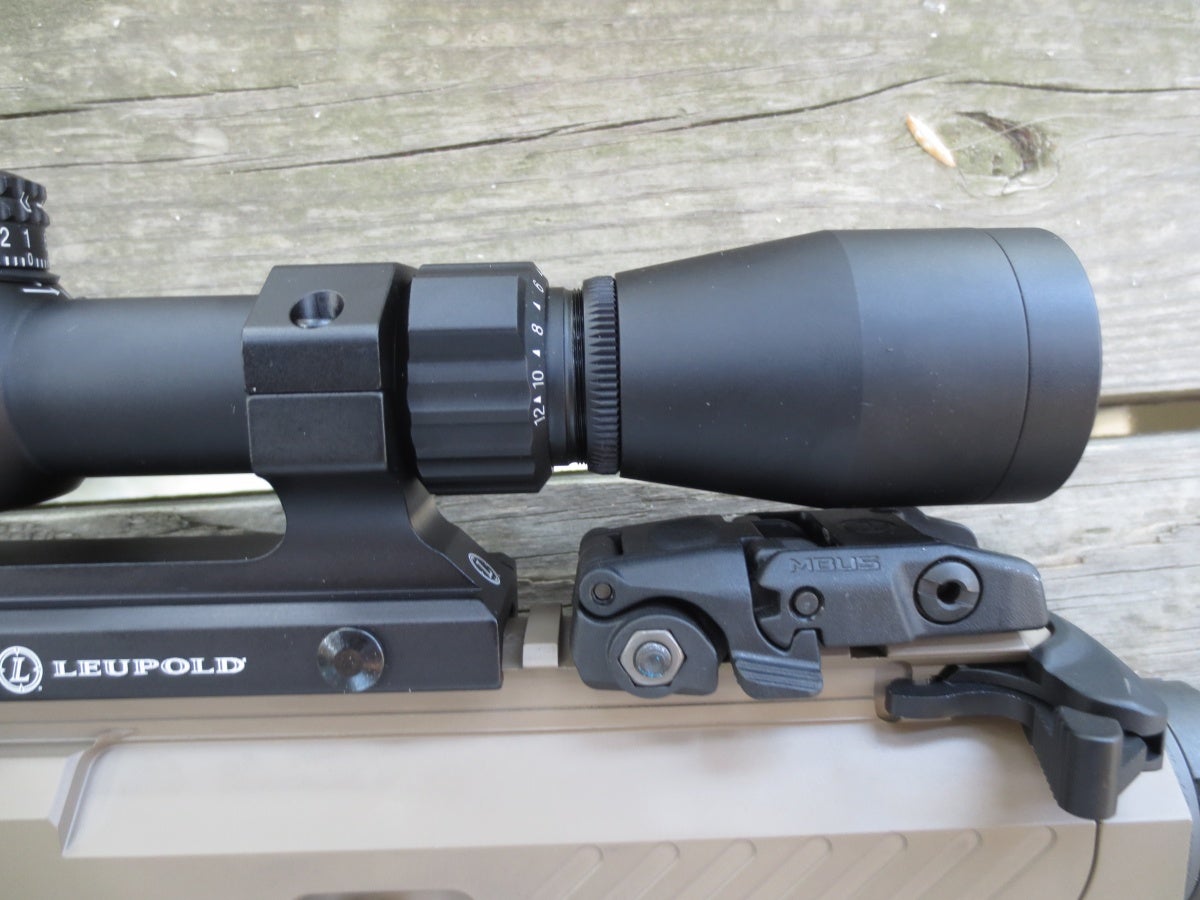
The mount clamped easily to the rifles receiver and the layout of the rings was perfect to keep the optic mounted to a MSR receiver without extending on to the rail, potentially losing zero. The mount used typical hex knobs which required tools to tighten to appropriate torque settings. Throughout the testing, the scope did not move in the rings and never lost zero.
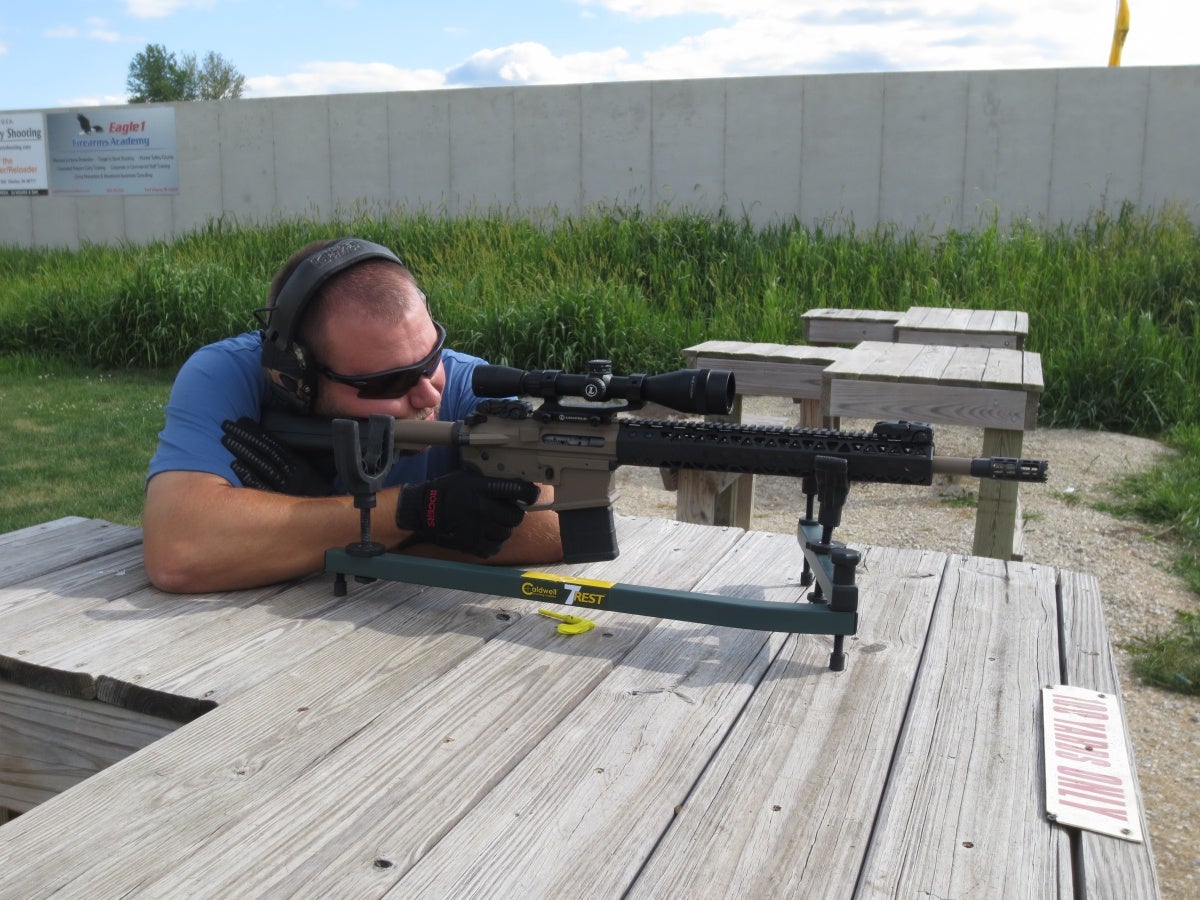
For the review, I used a Houlding Precision HPF-15 and various other MSRs including a Del-Ton AR-15, Bushmaster ACR, and later experience with a Faxon ARAK-21 using Mark AR 3-9x optics. All testing was done using 5.56 XM193 or match ammunition to verify accuracy and click adjustments. The optic is tuned to 55gr going about 3100 FPS from the muzzle.
On the Houlding rifle, my first group was about 4″ low and to the right. Using the 1/2 clicks, I was zeroed on the first attempt. The clicks are highly audible and tactile, but I would equate the adjustments to being like a Glock trigger. Each click has a lot of creep, but a solid and predictable break. It was easy to adjust without taking my eyes off the target counting adjustments.
Next, I tested for consistent and accurate click adjustments. . I took multiple 5 shot groups moving the turrets 20 clicks at a time (10″ at 100 yards). Each group was consistently 10″ from the previous one. Returning the scope to zero was easy, aided by the turret caps being returned to the “0” position. However, I did once turn the knob a complete revolution instead of back to zero. It would be nice to have a rotational indicator of some form, but I do not see a shooting situation under 600 yards where more than 15″ of movement would not be enough.
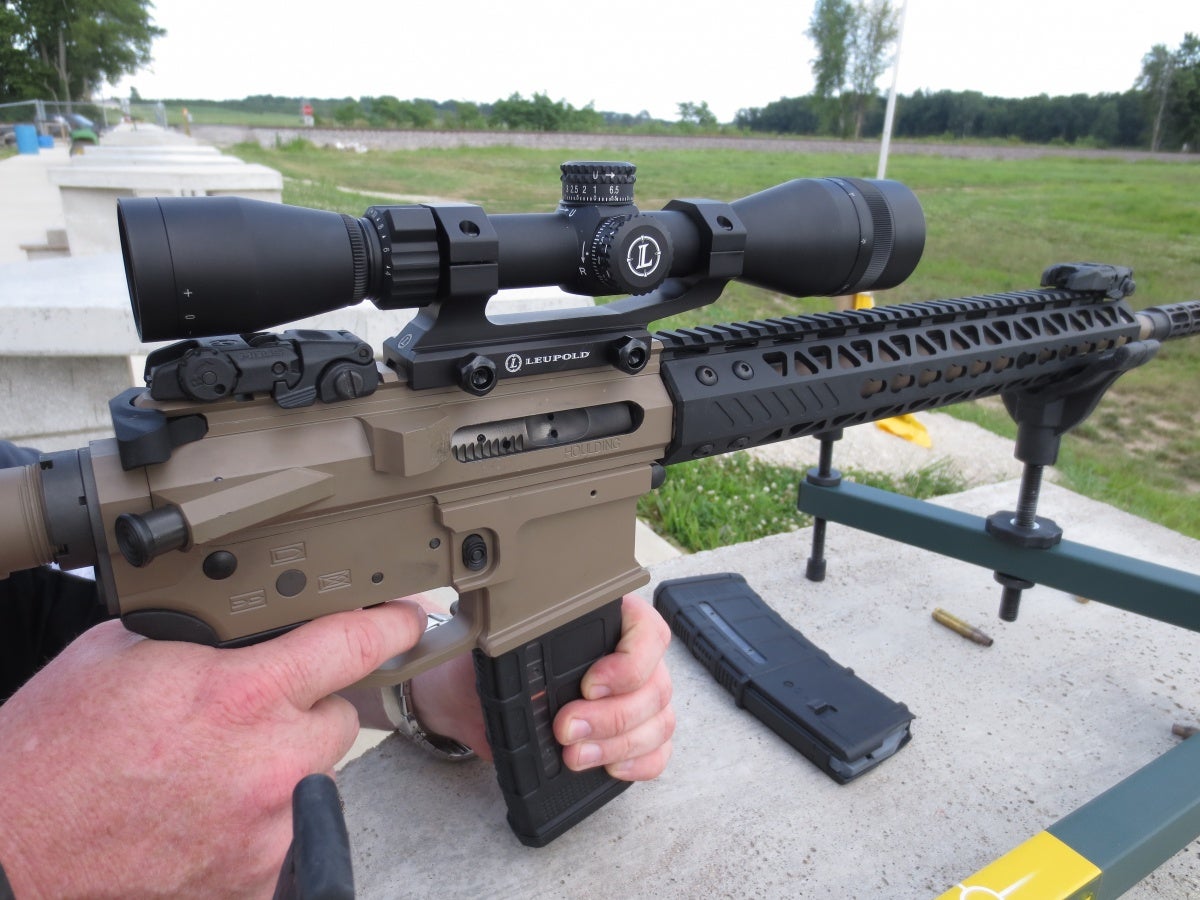
Satisfied that the click adjustments were spot-on, I stretched the legs of the rifle system. Using random major click adjustments, quickly, I attempted to Rubic’s Cube the scope. Returning to 0, I clicked the elevation out to 600 yards and took aim at a man-sized IPSC steel target. The steel returned a solid clang. Moving to shorter ranges, I aimed at a gopher at 300 and slipped a shot wide. Settling in again, there were sour consistent hits. in short, the elevation adjustments work. I wanted to reach for 1000 yards, but the scope’s pre-labeled adjustments go to only 650. Nuts.
Under all conditions the glass was bright, crisp, and clear. There was no discernable hazyness or clouding of the optics, even with significant swings in temperature (it was over 150 F in my truck to a 45-degree day). The Mark AR never skipped a beat.
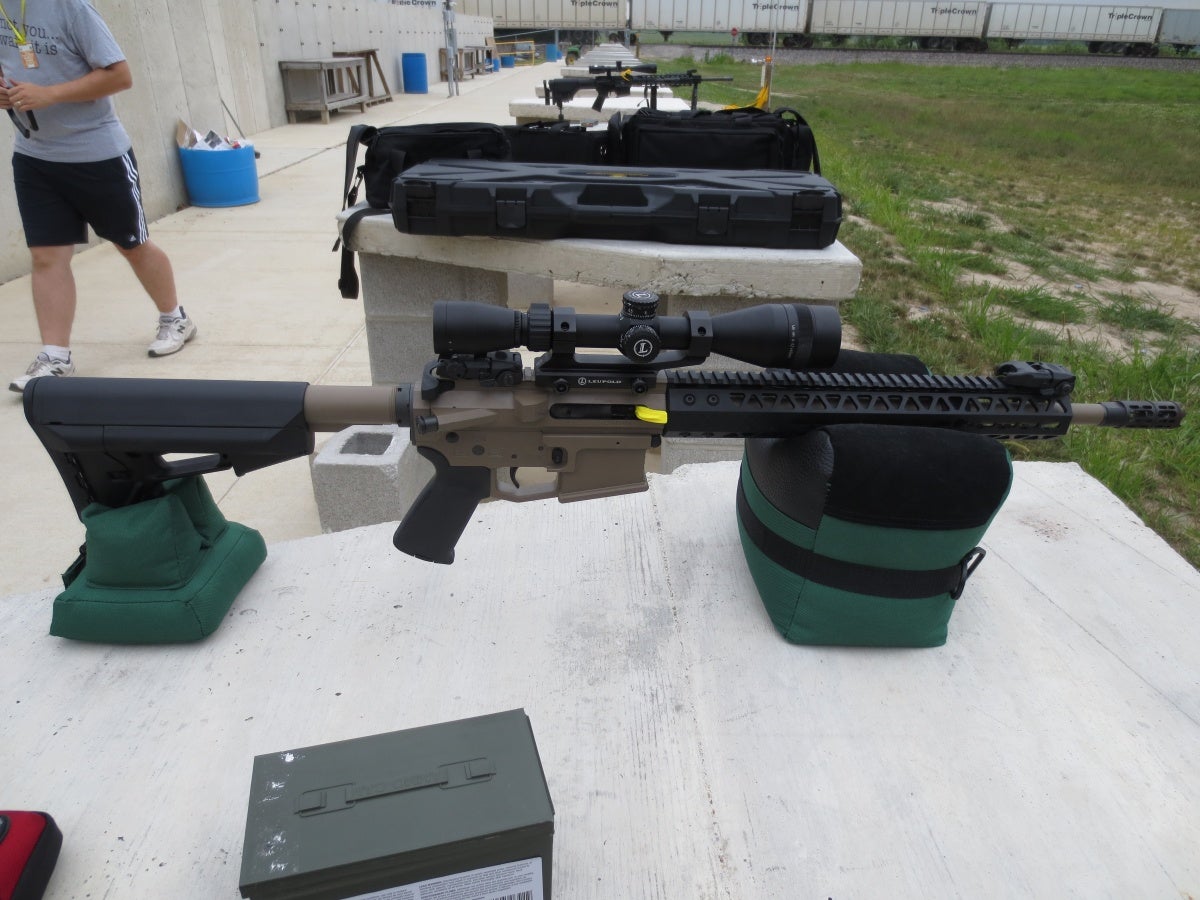
Dual Use?
Leupold wisely leaves the same markings on both turrets. With the Mil-Dot reticle, the scope can easily be used with other platforms and calibers. With the 1/2 MOA adjustments, the scope will not be for precision work. That said, its workable accuracy, especially for hunting and other shorter-range work. I tested it on a .308 and the .223 adjustments were significantly off. .308 drops faster and the 600 clicks were ringing steel at 400. That said, if a shooter is not using a .223, its a fine Mil-Dot scope.
The Good:
- Glass is crystal-clear, up to extreme low-light conditions.
- Adjustments are easy, precise, and with appropriate tactile feel.
The Notable:
- Some will bemoan the 1 inch tube. I will not. Its design and quality is enough to the intended usage and magnification.
- Does not include a mount in retail form. Shooters will need to procure their own.
- The 3-9x can have a illuminated reticle. Higher magnification scopes in the Mark AR series do not have the option.
The Bad:
- Would like to see custom or other caps available for the scope for different weights, calibers, etc. With its current cap, its only for limited, albiet, popular choices).
- From minimum to maximum zoom, the eye relief changes about an inch.
Final Thoughts:
The important thing to note is that this scope is not designed for extreme long-range and extreme precision shooting. It has only 1/2 MOA clicks and a very simple reticle. Its designed for MSRs and most ranges/situations that a shooter would encounter and is capable of engaging.
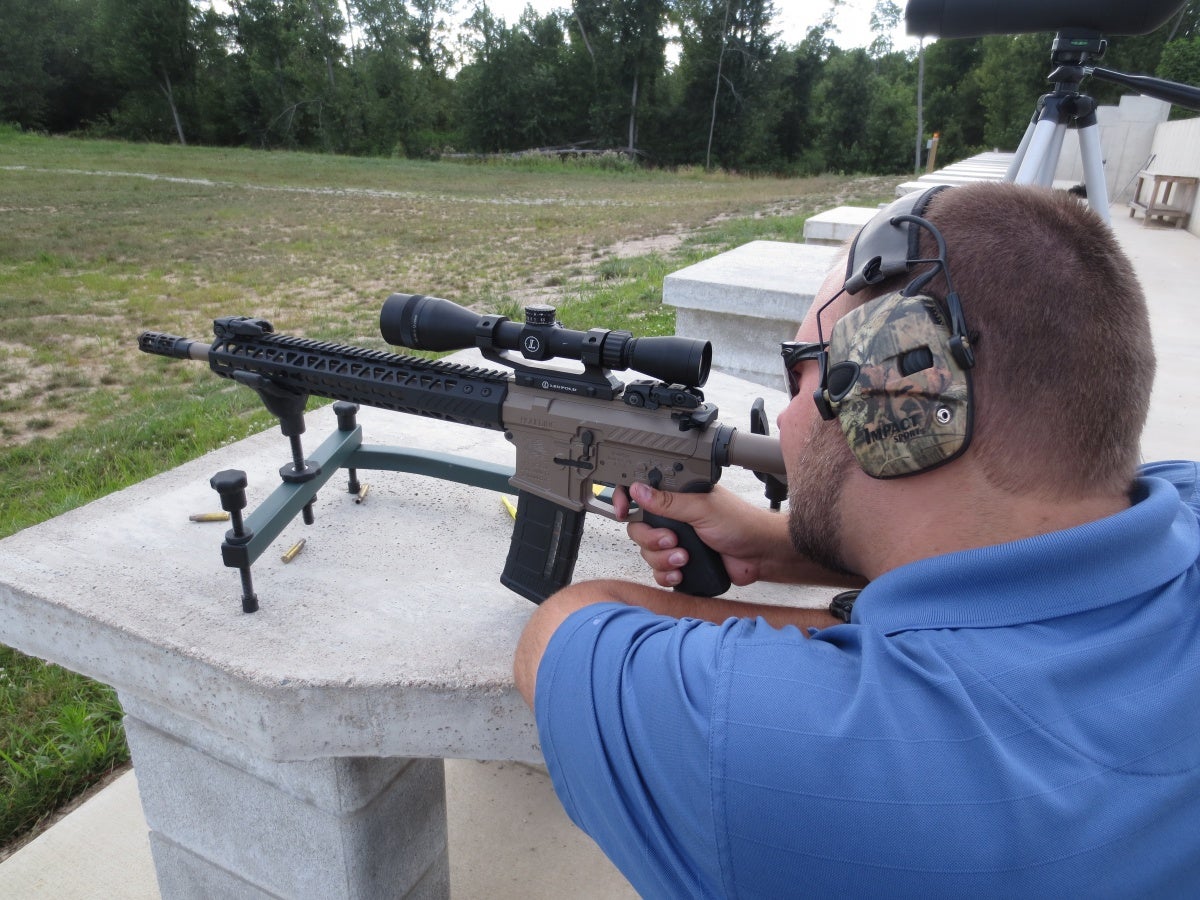
I really dislike giving very positive reviews, as each product has strengths and weaknesses. However, with the case of this Leupold, I just can’t find major fault with it, especially considering the price. At $564 for the 4-12x fine duplex and $624 for the Mil-Dot, its a veritable bargain. Retail runs significantly less in many cases.
If Leupold gets around to custom turret caps (or at the very least, pre-marked) for different calibers & custom loads, I’m sold to the exclusion of all others. Until then, the competitors have a chance for my dollars.
Gallery:
Specifications (From Leupold):
| Low | High | |
|---|---|---|
| Actual Magnification | 4.50 x | 11.50 x |
| Linear Field of View (ft/100 yd) | 20.40 ft | 9.70 ft |
| Linear Field of View (m/100 m) | 6.60 m | 3.10 m |
| Eye Relief (in) | 4.90 in | 3.70 in |
| Eye Relief (mm) | 125.00 mm | 95.00 mm |
| Weight (oz) | 14.90 oz |
| Weight (g) | 422.00 g |
| Objective Clear Aperture (in) | 1.50 in |
| Objective Clear Aperture (mm) | 39.00 mm |
| Elevation Adjustment Range | 67.00 moa |
| Windage Adjustment Range | 67.00 moa |

| A. Length | 12.40 in |
| B. Tube Length | 4.70 in |
| C. Illustration | 1.60 in |
| D. Illustration | 2.00 in |
| E. Eyepiece Length | 3.20 in |
| F. Objective Length | 3.90 in |
| G. Objective Diameter | 2.00 in |
| H. Eyepiece Diameter | N/A |
| K. Tube Diameter | 1.0 in |
 Your Privacy Choices
Your Privacy Choices
